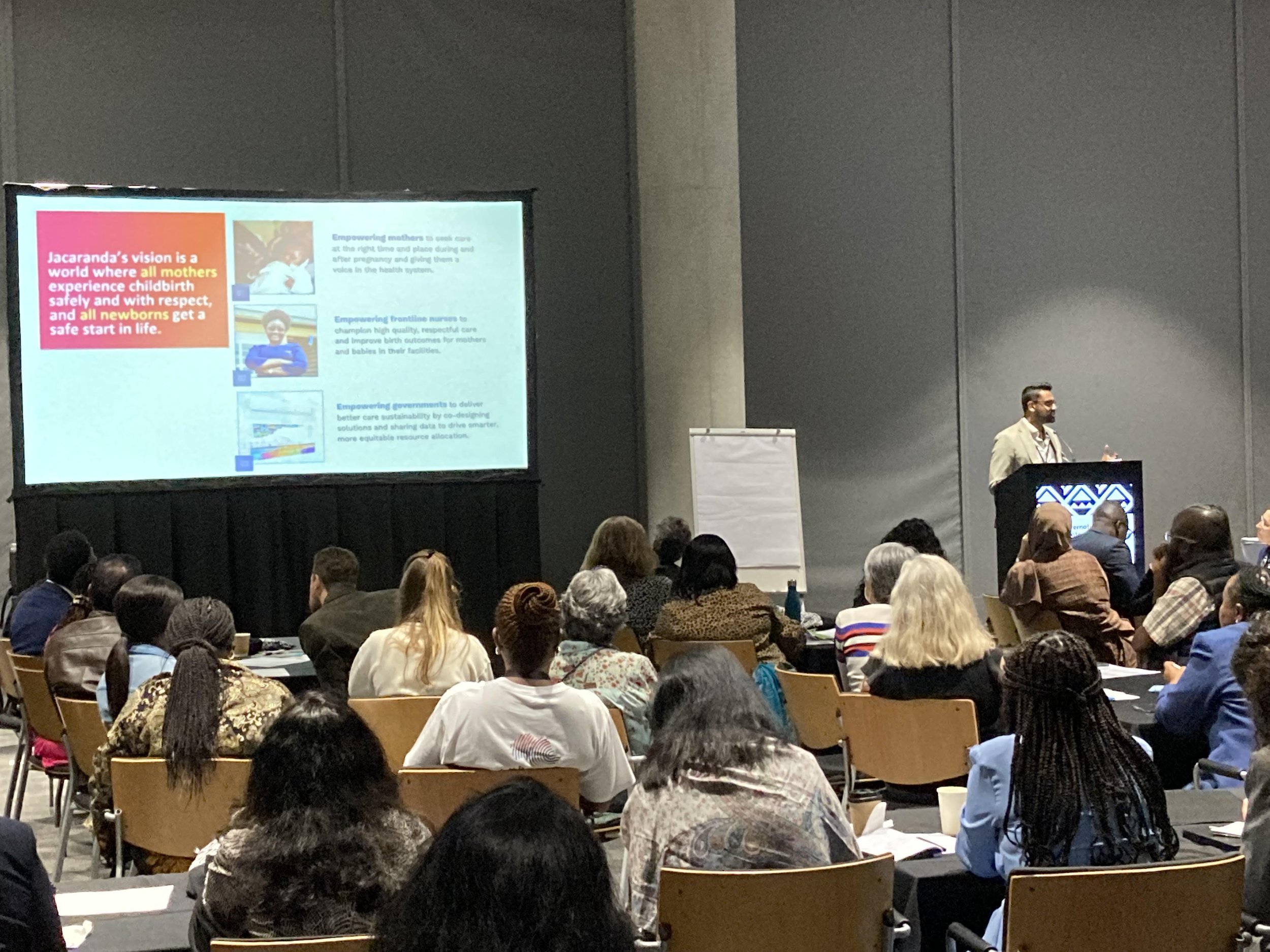Service Delivery Redesign, or SDR, has become something of a hot topic in maternal and newborn health. It proposes a rethink of how health systems are organized to make quality obstetric and newborn services both acceptable and available to all mothers and babies.
But what does this practically look like on the ground? The first day of IMNCH 2023 presented three country case studies for SDR in Kenya, Tanzania and South Africa, led by panelists Sathy Rajasekharan, Caitlin Dolkart, Sunday Dominico, and Keith Cloete. Three clear threads emerged from discussions; that common problems exist in complex health systems, that SDR is a continuous process, and that there are no silver bullets to improving services for mothers. Here are our takeaways:
On stakeholder engagement…
Effective SDR starts with understanding what matters to each of the key stakeholders: mothers, their communities, frontline health providers, and their managers. Panelists highlighted the importance of seeing redesign as a shared responsibility, relying on a constant process of engagement and re-engagement with stakeholders to build trust and ownership in the process. In Tanzania, Sunday Dominico referenced ‘Community Scorecards’ as an effective way to align the needs of communities, providers, and health system managers towards sustainable facility improvements. In Kenya, Jacaranda’s Sathy Rajasekharan explained how a facility ticketing system in Kakamega County could offer support to both mothers and providers by addressing long waiting times and helping nurses better manage their workflows.
On the public and private sector…
Public private sector collaboration is key to SDR, but was also highlighted as a complex landscape to navigate. Panelists called for the private sector to accept the importance of government stewardship over health interventions in their respective health systems, and for the public sector to recognize the value of the private sector to support certain service improvements – like emergency transport.
Given the complexity of these systems, discussions also highlighted the need for a cross-sectoral approach to engaging the public sector in redesign, ensuring Ministries of Transport, ICT, Water & Sanitation buy into and own the process of change.
On human resources for health…
SDR has to work as much for providers as it does for patients. Central to discussions was provider welfare, and the need for sensitive redesign. Sathy Rajasekharan stressed the sensitivities around facility transfers, ensuring nurses and midwives continued to feel valued and motivated in their role after transfer, as a prerequisite to respectful care for mothers.
Rescue.co’s Caitlin Dolkart discussed how digital or AI-based solutions could work to relieve, not replace the growing workloads of frontline providers and emergency medical teams. Continuous, facility-based drills in lower-level facilities were presented as a way of helping nurses recognize when to refer high-risk cases to improve survival.
On data for decision-making…
A central thread in discussions was the importance of triangulating robust, real-time data, rather than relying on national information systems. Keith Cloete stressed the importance of looking at data collaboratively across the private and public sector as a powerful tool for decision-making, and a way of constantly targeting system improvements to priority gaps.
In Kenya, Sathy Rajasekharan shared how co-designing ‘traffic light coded’ data dashboards with county governments is helping them better identify ‘red flags’ impacting mothers in the health system, and incentivize ‘continuous red to green improvements’. All panelists highlighted the need for data systems that center around client needs and experiences as a starting point.

